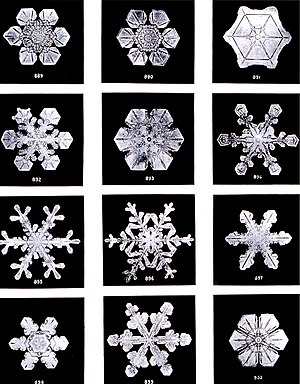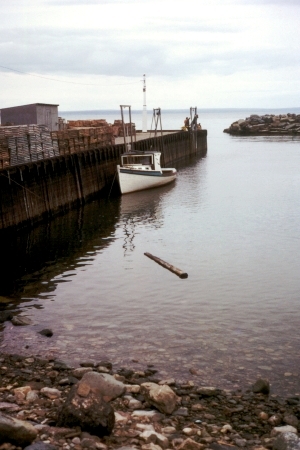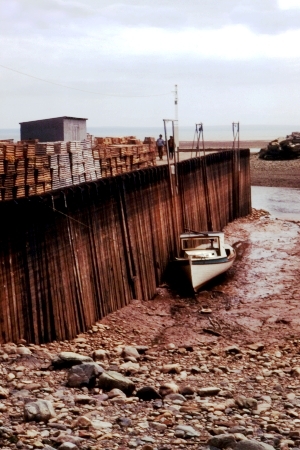ꯏꯁꯤꯡ
ꯏꯁꯤꯡ ꯑꯁꯤ ꯃꯅꯨꯡ ꯃꯄꯥꯟ ꯐꯥꯎꯅꯥ ꯎꯕ ꯉꯝꯕ,ꯃꯍꯥꯎꯌꯥꯎꯗꯕ,ꯃꯅꯝꯂꯩꯇꯕ, ꯑꯃꯁꯨꯡ ꯌꯥꯝꯅꯥ ꯅꯛꯅꯥ ꯃꯆꯨꯂꯩꯇꯕ ꯀꯦꯃꯤꯀꯦꯜ substance,ꯑꯁꯤ ꯃꯄꯨꯡ ꯑꯣꯏꯕ ꯄꯣꯠꯆꯪ ꯑꯃꯥ ꯑꯣꯏꯔꯤ ꯃꯂꯦꯝꯒꯤ ꯂꯣꯛꯂꯤꯁꯤꯡ, ꯄꯥꯠꯁꯤꯡ ꯑꯃꯁꯨꯡ ꯑꯆꯧꯕ ꯏꯄꯥꯛꯁꯤꯡ,ꯑꯃꯁꯨꯡ ꯑꯍꯤꯁꯕꯁꯤꯡꯒꯤ ꯃꯍꯤ ꯫ ꯏꯁꯤꯡ ꯒꯤ ꯀꯦꯃꯤꯀꯦꯜ ꯐꯣꯔꯃꯨꯂꯥ H2O, ꯋꯥꯍꯟꯊꯣꯛꯇꯤ ꯃꯁꯤꯒꯤ ꯃꯣꯂꯤꯀꯨꯜ ꯈꯨꯗꯤꯡꯗ ꯑꯛꯁꯤꯖꯦꯟ ꯑꯃꯥ ꯑꯃꯁꯨꯡ ꯍꯥꯏꯗ꯭ꯔꯣꯖꯦꯟ ꯑꯦꯇꯣꯝ ꯑꯅꯤ ꯑꯁꯤ ꯀꯣꯕꯦꯂꯦꯟ ꯕꯣꯟ ꯒꯤ ꯃꯇꯦꯡꯅꯥ ꯁꯝꯅꯍꯟꯂꯤ ꯫ ꯏꯁꯤꯡ ꯑꯁꯤꯅ Water is the name of the liquid state of H2
Clouds are formed from suspended droplets of water and ice, its solid state. When finely divided, crystalline ice may precipitate in the form of snow. The gaseous state of water is steam or water vapor. Water moves continually through the water cycle of evaporation, transpiration (evapotranspiration), condensation, precipitation, and runoff, usually reaching the sea.

Water covers 71% of the Earth's surface, mostly in seas and oceans. Small portions of water occur as groundwater (1.7%), in the glaciers and the ice caps of Antarctica and Greenland (1.7%), and in the air as vapor, clouds (formed of ice and liquid water suspended in air), and precipitation (0.001%).
Water plays an important role in the world economy. Approximately 70% of the freshwater used by humans goes to agriculture. Fishing in salt and fresh water bodies is a major source of food for many parts of the world. Much of long-distance trade of commodities (such as oil and natural gas) and manufactured products is transported by boats through seas, rivers, lakes, and canals. ꯏꯁꯤꯡꯒꯤ ꯑꯆꯧꯕ ꯁꯔꯨꯛꯁꯤꯡ ꯎꯟ, ꯂꯣꯛꯂꯤ ꯑꯁꯤ ꯁꯤꯟ-ꯁꯥꯕꯒꯤ ꯑꯃꯗꯤ ꯌꯨꯝꯒꯤ ꯑꯁꯥꯕꯁꯤꯡ ꯏꯪꯊꯅꯕ ꯁꯤꯖꯤꯟꯅꯩ ꯫ Water is an excellent solvent for a wide variety of chemical substances; as such it is widely used in industrial processes, and in cooking and washing. Water is also central to many sports and other forms of entertainment, such as swimming, pleasure boating, boat racing, surfing, sport fishing, and
ꯃꯑꯣꯡ


ꯄꯣꯜꯂꯥꯔꯤꯇꯤ ꯑꯃꯁꯨꯡ ꯍꯥꯏꯗꯔꯣꯖꯦꯟ ꯁꯝꯅꯍꯟꯕ



ꯃꯂꯦꯝ ꯗꯥ

ꯏꯁꯤꯡ ꯁꯥꯏꯀꯜ

ꯑꯁꯦꯡꯕ ꯏꯁꯤꯡ ꯇꯨꯡꯁꯤꯟꯗꯨꯅꯥ ꯊꯝꯐꯝ
ꯏꯄꯥꯛꯀꯤ ꯏꯁꯤꯡ ꯑꯃꯁꯨꯡ ꯏꯊꯛꯁꯤꯡ
ꯏꯁꯤꯡ ꯏꯄꯥꯛ ꯑꯁꯤ ꯆꯥꯗ ꯳.꯵% ꯁꯣꯗꯤꯑꯝ ꯀ꯭ꯂꯣꯔꯥꯏꯗ ꯆꯥꯡꯆꯠꯇꯥ ꯌꯥꯎ ꯏ, ꯁꯤꯗꯒꯤ ꯍꯦꯟꯇꯣꯛꯇꯅꯥ ꯑꯇꯣꯞꯄ ꯄꯣꯠꯆꯥꯛ ꯃꯆꯥꯁꯤꯡ ꯌꯥꯎ ꯏ ꯫ ꯏꯄꯥꯛꯀꯤ ꯏꯁꯤꯡ ꯑꯁꯤ ꯑꯁꯦꯡꯕ ꯏꯁꯤꯡ ꯗꯒꯤ ꯌꯥꯝꯅꯥ ꯈꯦꯠꯅꯩ ꯫ ꯃꯁꯤ ꯐꯝꯖꯤꯟꯂꯤ ꯑꯅꯦꯝꯕ ꯑꯌꯤꯡ ꯑꯁꯥ ꯗ ꯐꯥꯎꯕ −꯱.꯹ degrees Celsius (꯲꯸.꯶ degrees Fahrenheit)) ꯑꯃꯁꯨꯡ ꯀꯨꯡꯕꯒꯤ ꯆꯥꯡ ꯍꯦꯟꯒꯠꯂꯛ ꯏ ꯑꯌꯤꯡ ꯑꯁꯥ ꯅꯥ ꯐꯝꯖꯤꯟꯕꯒꯤ ꯌꯥꯡ ꯌꯧꯅꯥ ꯏꯪꯊꯔꯛꯂꯤꯉꯩꯒꯤ ꯫ ꯊꯨꯝꯂꯤ ꯆꯦꯟꯕꯒꯤ ꯆꯥꯡ ꯈꯔꯥ ꯈꯔꯥ ꯆꯥꯎꯕ ꯏꯄꯥꯛꯇꯤ ꯑꯣꯏꯅꯥ ꯆꯥꯗ ꯰꯬꯷% ꯅꯥ ꯕꯥꯜꯇꯤꯛ ꯏꯄꯥꯛ ꯑꯗꯨꯒꯥ ꯴.꯰% ꯅꯥ ꯑꯉꯥꯡꯕ ꯏꯄꯥꯛ ꯫ (ꯑꯁꯤꯕ ꯏꯄꯥꯛ ꯑꯁꯤ ꯃꯤꯌꯥꯝꯅꯥ ꯍꯦꯟꯅꯥ ꯈꯪꯅꯩ ꯊꯨꯝꯂꯤ ꯌꯥꯝꯅꯥ ꯆꯦꯟꯕꯒꯤꯗꯃꯛ ꯳꯰%-꯴꯰%, ꯑꯁꯦꯡꯕ ꯊꯨꯝ ꯄꯥꯠ꯫)
ꯏꯊꯛ ꯁꯤꯡ ꯑꯁꯤ ꯃꯇꯝꯒꯤ ꯈꯣꯡꯂꯩ ꯅꯥꯏꯅꯥ ꯍꯟꯅꯥ ꯍꯦꯟꯒꯠꯂꯛꯄꯥ ꯑꯃꯁꯨꯡ ꯇꯥꯊꯕ ꯏꯄꯥꯛ ꯀꯤ ꯊꯥꯛꯇꯒꯤ ꯑꯁꯤ ꯏꯊꯛꯀꯤ ꯁꯥꯐꯨ ꯅꯨꯃꯤꯠ ꯑꯃꯁꯨꯡ ꯊꯥ ꯑꯅꯤ ꯃꯔꯛꯇꯥ ꯊꯣꯛꯄꯥ ꯑꯗꯨ ꯑꯆꯧꯕ ꯏꯄꯥꯛ ꯇꯥ ꯄꯤꯁꯤꯟꯕꯒꯤꯅꯤ ꯫ ꯏꯊꯛ ꯅꯥ ꯑꯔꯨꯕ ꯊꯨꯝꯂꯤ ꯆꯦꯟꯕ ꯏꯁꯤꯡꯗ ꯑꯍꯣꯡꯕ ꯈꯔꯥ ꯊꯣꯛꯍꯟꯂꯤ ꯫
ꯁꯤꯃꯁꯨ ꯌꯦꯡꯕꯤꯌꯨ
ꯂꯧꯔꯛꯐꯝ
This article uses material from the Wikipedia ꯃꯤꯇꯩꯂꯣꯟ article ꯏꯁꯤꯡ, which is released under the Creative Commons Attribution-ShareAlike 3.0 license ("CC BY-SA 3.0"); additional terms may apply (view authors). ꯃꯅꯨꯡꯒꯤ ꯑꯌꯥꯎꯕꯁꯤ CC BY-SA 4.0ꯒꯤ ꯃꯈꯥꯗ ꯐꯪꯍꯟꯕꯅꯤ, ꯑꯇꯣꯞꯄ ꯃꯤꯑꯣꯏꯁꯤꯡꯅ ꯏꯁꯤꯟꯗ꯭ꯔꯤꯈꯩ ꯫ Images, videos and audio are available under their respective licenses.
®Wikipedia is a registered trademark of the Wiki Foundation, Inc. Wiki ꯃꯤꯇꯩꯂꯣꯟ (DUHOCTRUNGQUOC.VN) is an independent company and has no affiliation with Wiki Foundation.

